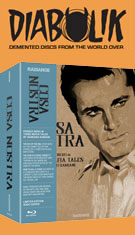
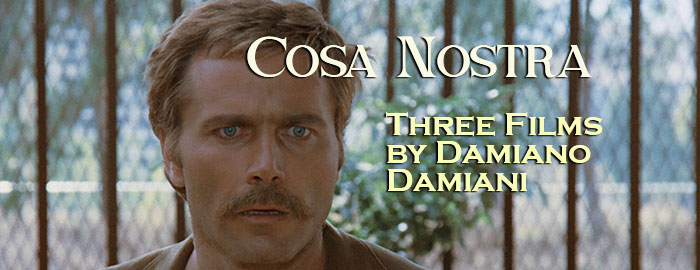
THE DAY OF THE OWL
Color, 1968, 108 mins. 40 secs. / 103 mins. 11 secs.
Directed by Damiano Damiani
Starring Franco Nero, Claudia Cardinale, Lee J. Cobb
Radiance Films (Blu-ray) (US/UK RA/RB HD), Studiocanal (Blu-ray) (France RB HD) / WS (1.85:1) (16:9)
THE CASE IS CLOSED, FORGET IT
Color, 1971,
106 mins. 10 secs.
Directed by Damiano Damiani
Starring Franco Nero, Riccardo Cucciolla, Georges Wilson, John Steiner, Antonio Casale
Radiance Films (Blu-ray) (US/UK RA/RB HD), Koch Media (Blu-ray & DVD) (Germany RB/R2 HD/PAL) / WS (1.85:1) (16:9)
HOW TO KILL A JUDGE
Color, 1975, 110 mins. 42 secs.
Directed by Damiano Damiani
Starring Franco Nero, Marco Guglielmi, Francoise Fabian
Radiance Films (Blu-ray) (US/UK RA/RB HD), Blue Underground (US R0 NTSC) / WS (1.85:1) (16:9)
The varied career of 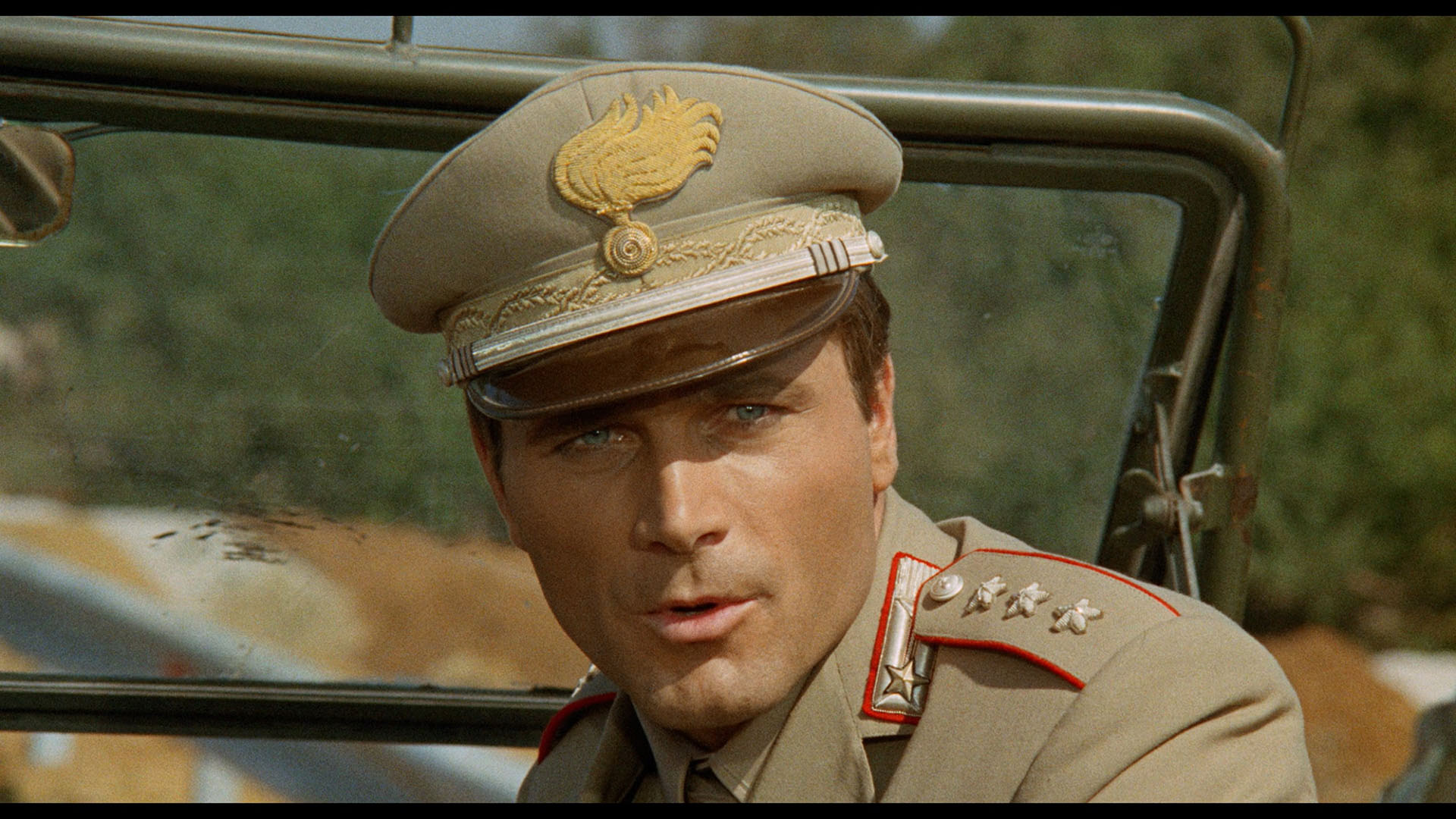 director Damiano Damiani is an often dizzying one including The Witch in Love,
director Damiano Damiani is an often dizzying one including The Witch in Love, 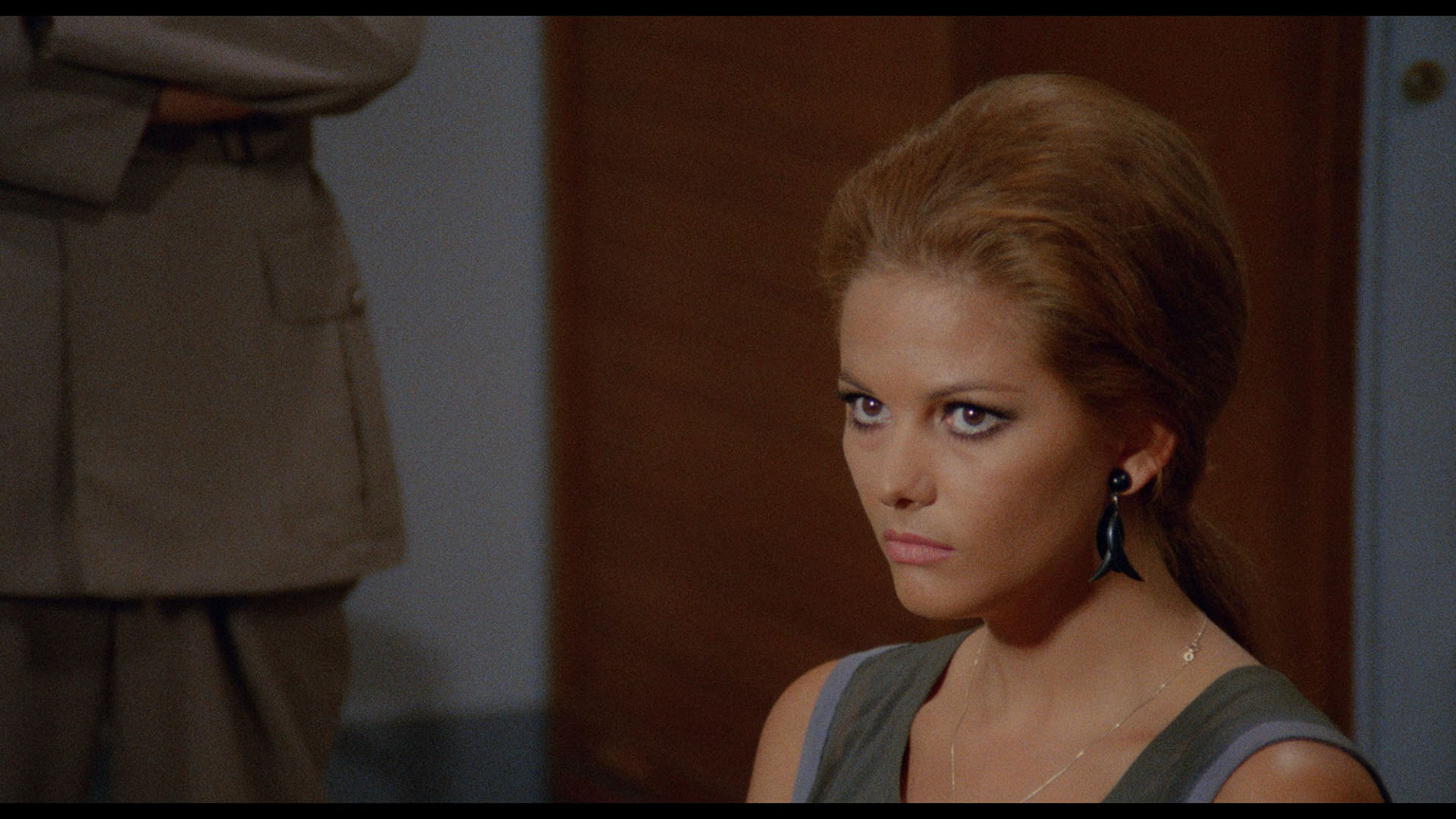 Confessions of a Police Captain, A Bullet for the General, and the strange Bette Davis vehicle, The Empty Canvas. On four occasions he directed popular leading man Franco Nero, and three of those were Mafia-themed crime dramas collected by Radiance Films in its 2023 boxed set, Cosa Nostra: Franco Nero in Three Mafia Tales by Damiano Damiani. Spanning eight years in the careers of its star and director, the trio of films makes for a compelling evolution of how the Mafia was handled on Italian screens ranging from gritty Sicilian drama to a large-scale canvas of political corruption.
Confessions of a Police Captain, A Bullet for the General, and the strange Bette Davis vehicle, The Empty Canvas. On four occasions he directed popular leading man Franco Nero, and three of those were Mafia-themed crime dramas collected by Radiance Films in its 2023 boxed set, Cosa Nostra: Franco Nero in Three Mafia Tales by Damiano Damiani. Spanning eight years in the careers of its star and director, the trio of films makes for a compelling evolution of how the Mafia was handled on Italian screens ranging from gritty Sicilian drama to a large-scale canvas of political corruption.
First up is The Day of the Owl (Il giorno della civetta), released widely in English as Mafia and based on Leonardo Sciascia's 1961 novel. Fresh off a stint in Hollywood that didn't really prove to his liking, Nero stars as Captain Bellodi, whose latest investigation into the death of a construction delivery man in Sicily puts him on the trail of extensive corruption within the construction industry and beyond. All signs point to the powerful and cynical Don Mariano Arena (Cobb), who is also conducting a sinister smear campaign against the most valuable potential witness, married Rosa Nicolosi (Cardinale).
A significant hit at home despite local attempts to sabotage the production during filming, The Day of the Owl was a gutsy film at the time and still feels very potent thanks to some very committed performances and striking location photography by Tonino Delli Colli. The constant sun-blasted look of the film is a smart choice and would be a recurring factor in later Damiano films such as his excellent female-centered take on the Mafia just after this, The Most Beautiful Wife. An effective score by Giovanni Fusco (who died the year of the film's release) is a major asset as well and should be better known, and it's no wonder this was snapped up for a U.S. release by AIP (with a bit of editing to quicken the pace).
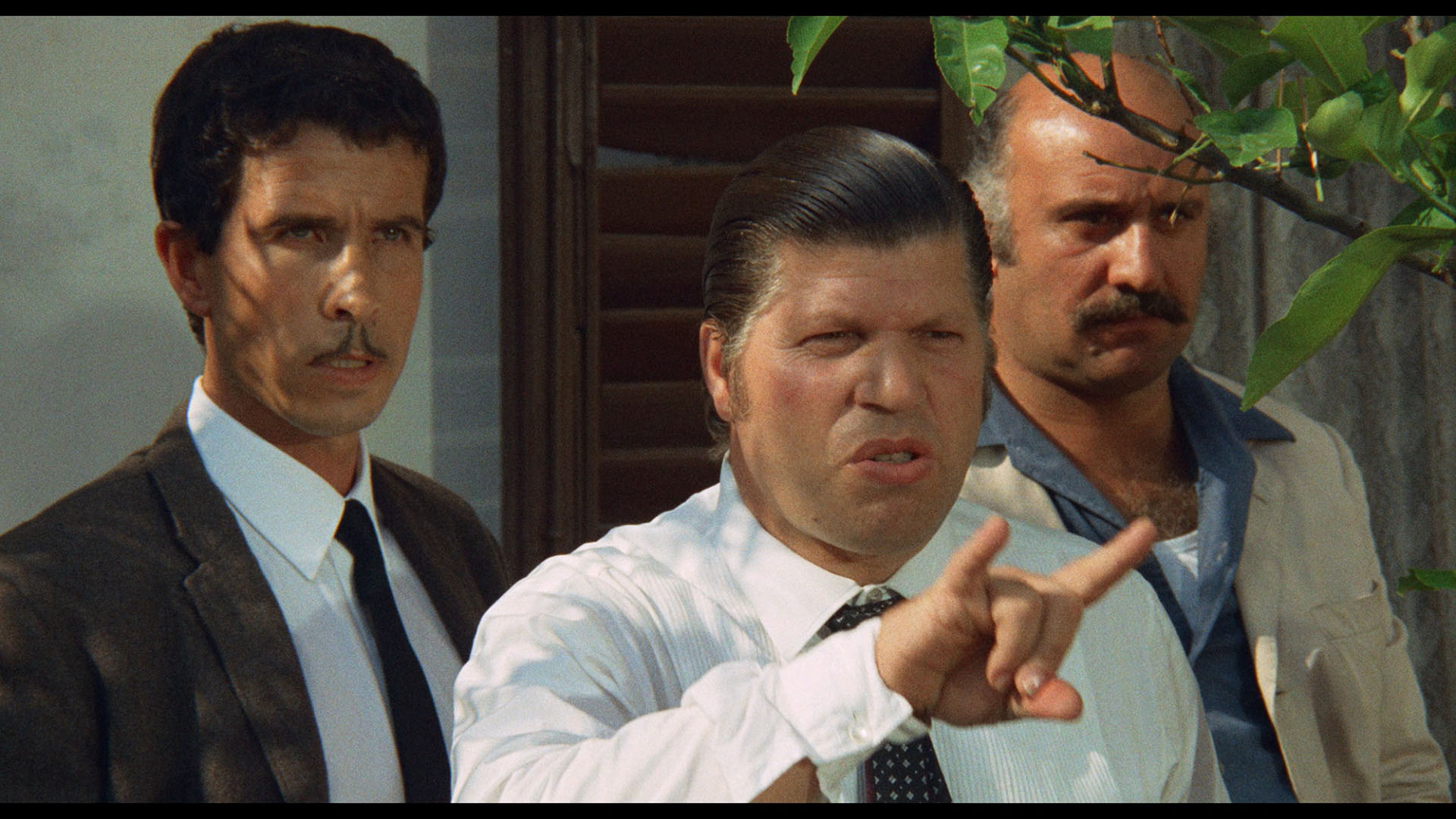 The Italian cut has been around on VHS and DVD for quite a while (including an unauthorized disc from Wild East), and it premiered on Blu-ray in France (no English options) from Studiocanal as part of the "Make My Day" series. The Radiance edition features both the Italian and English versions with DTS-HD MA 2.0 mono tracks, with English-translated and
The Italian cut has been around on VHS and DVD for quite a while (including an unauthorized disc from Wild East), and it premiered on Blu-ray in France (no English options) from Studiocanal as part of the "Make My Day" series. The Radiance edition features both the Italian and English versions with DTS-HD MA 2.0 mono tracks, with English-translated and 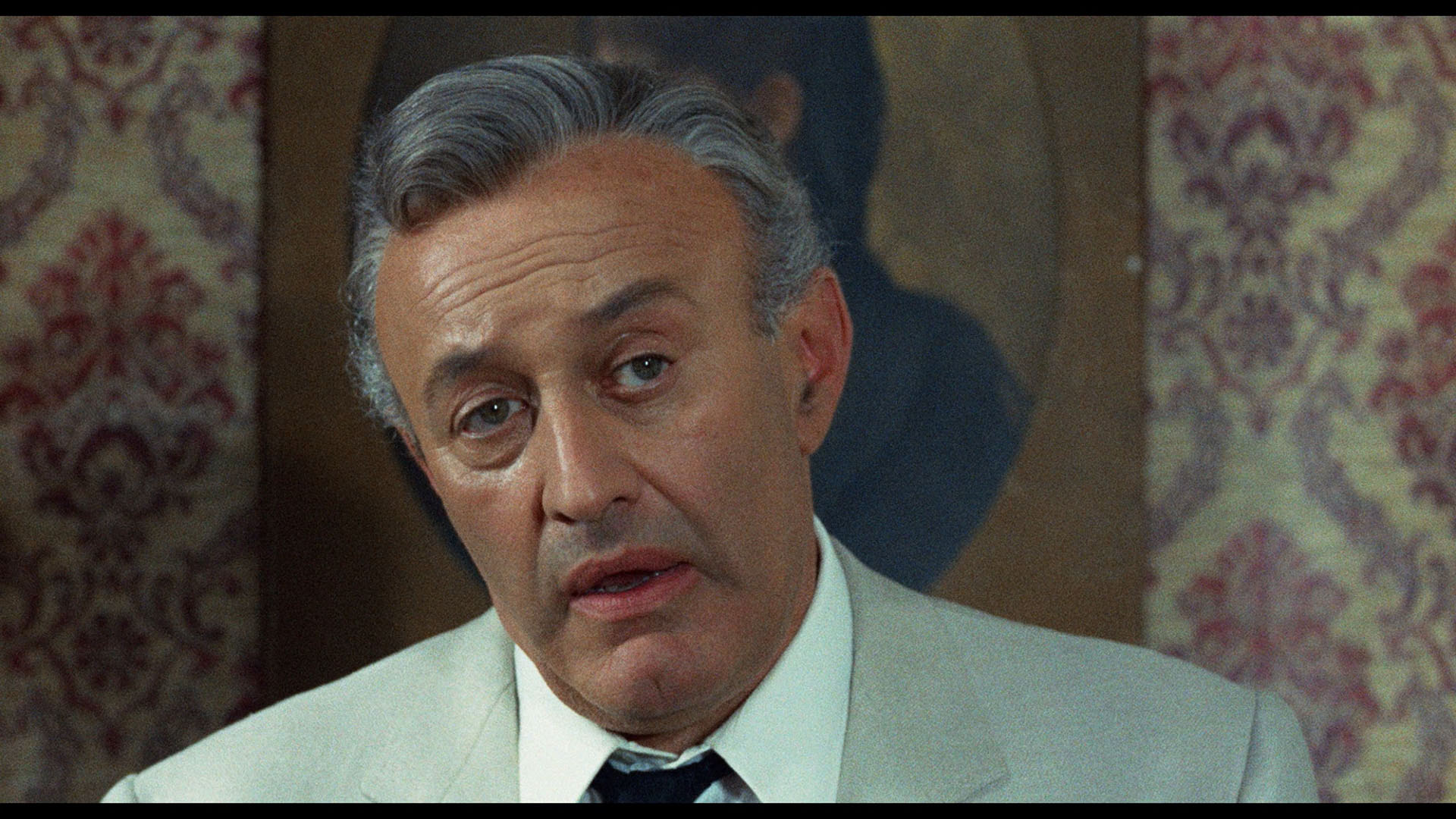 SDH subtitles. The transfer sourced from a 2K restoration (the one released by Studiocanal by all appearances) looks excellent throughout. A new interview with Nero (17m21s) covers his working relationship with "one of the most American directors working in Europe," including his proficiency in English (which led to him going to the U.S. to make Amityville II: The Possession) and his aesthetic obsessions that included his growing time spent painting. "Franco Nero, Ugo Pirro, Lucio Trentini" (26m34s) is a 2006 documentary with the star, screenwriter, and production manager recalling the film's shooting in '67 (just after Nero's turn in Camelot), the fame of the source novel, the short haircut needed for Nero's role, the geographic idea that set it apart from the book, and the awe they felt getting to work with Cobb. A 2017 Belgian TV interview with Cardinale (22m20s) features her riding around at night in "Hep Taxi!" dishing out stories about her life and career, including rebuffing Marlon Brando's advances. "Identity Crime-sis: An Italian Genre Finds Itself" (20m4s) features Euro-crime expert Mike Malloy explaining how the film came after the wave of neorealism-inspired films, essentially serving as part of a transition to the more baroque action films to come the following decade. Finally Howard S. Berger and David Nicholson-Fajardo's "Casting Cobb: A Tale of Two Continents" (32m36s) takes a deep dive into the transition from the blustery stage and screen actor in America to occasional strong roles in Italian crime sagas like this and The Great Kidnapping where he could provide expert shading to his elder thespian statesman roles. The Italian trailer is also included.
SDH subtitles. The transfer sourced from a 2K restoration (the one released by Studiocanal by all appearances) looks excellent throughout. A new interview with Nero (17m21s) covers his working relationship with "one of the most American directors working in Europe," including his proficiency in English (which led to him going to the U.S. to make Amityville II: The Possession) and his aesthetic obsessions that included his growing time spent painting. "Franco Nero, Ugo Pirro, Lucio Trentini" (26m34s) is a 2006 documentary with the star, screenwriter, and production manager recalling the film's shooting in '67 (just after Nero's turn in Camelot), the fame of the source novel, the short haircut needed for Nero's role, the geographic idea that set it apart from the book, and the awe they felt getting to work with Cobb. A 2017 Belgian TV interview with Cardinale (22m20s) features her riding around at night in "Hep Taxi!" dishing out stories about her life and career, including rebuffing Marlon Brando's advances. "Identity Crime-sis: An Italian Genre Finds Itself" (20m4s) features Euro-crime expert Mike Malloy explaining how the film came after the wave of neorealism-inspired films, essentially serving as part of a transition to the more baroque action films to come the following decade. Finally Howard S. Berger and David Nicholson-Fajardo's "Casting Cobb: A Tale of Two Continents" (32m36s) takes a deep dive into the transition from the blustery stage and screen actor in America to occasional strong roles in Italian crime sagas like this and The Great Kidnapping where he could provide expert shading to his elder thespian statesman roles. The Italian trailer is also included.
Next on disc two we enter the '70s with The Case Is Closed: Forget It (L'istruttoria è chiusa: dimentichi), based on a novel by Leros Pittoni with a focus on the Italian penal system and its infiltration by strong Mafia influences. Here Nero stars as Vanzi, a middle-class architect who ends up behind bars for a traffic incident he still denies. After a stint in solitary, he mingles with a peculiar crew of fellow prisoners including a particularly maniacal John Steiner (Tenebrae) in one of his earliest major roles. He ends up sharing cell space with two other men -- one of whom, Presenti (Rabid Dogs' Cucciolla), was a whistle-blower on a Mafia-connected dam project and may have ties to Vanzi's incarceration. Complete with a cameo by Damiani himself as an attorney, this may be the bleakest and most scathing of the trilogy here with the title's meaning weighing heavily on a downbeat but highly realistic turn of events.
Long available on home video in Europe but never in the U.S., The Case Is Closed gets its first wide shot at English-friendly exposure here via Radiance's presentation with another solid 2K scan that brings out the most from its deliberately dark and restrained color scheme; even the few bright outdoor scenes are detailed but oppressive, in keeping with the nature of the film. (As of this writing, the disc won't play in a computer optical drive so no frame grabs for this one at the moment.) Audio tracks include LPCM 2.0 mono Italian and English with translated English or English SDH subtitles; the Italian is definitely the way to go here as it's the language spoken by most (but not all) of the actors and is in much better condition. Another new Franco interview (14m26s) covers his approach to
playing "a cog in the prison's mafia system" and his favorite moments from the film, including some interesting takes on his characters and his fond memories of his co-stars. "Enrique Berger, Corrado Solari and Antonio Sicliano" (28m9s) features a new edit of 2015 interviews with the film's assistant director, actor, and editor
about the film's sort-of literary source, Damiani's personality and large stature, the audition process, and anecdotes about other actors like the humorous and cultured Steiner. In "Italy's Cinematic Civil Conscience" (35m29s), Rachael Nisbet provides a very incisive look at Damiani's career and the political strains running through much of his work including his balance of artistic craft and social commitment. The Italian trailer is also included.
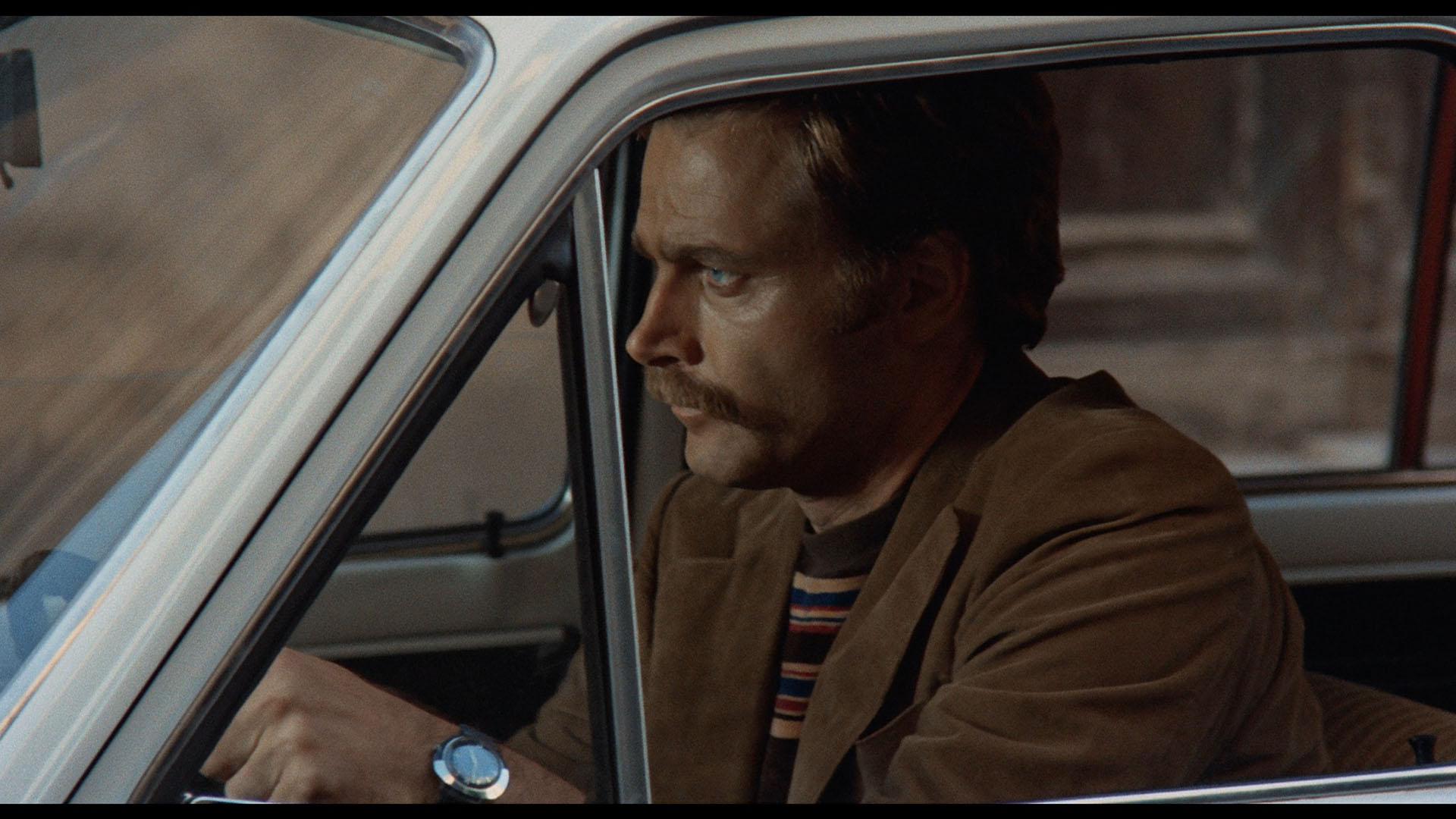 Finally our third Mafia study with Damiani and Nero is How To Kill a Judge (Perché si uccide un magistrato,
Finally our third Mafia study with Damiani and Nero is How To Kill a Judge (Perché si uccide un magistrato, 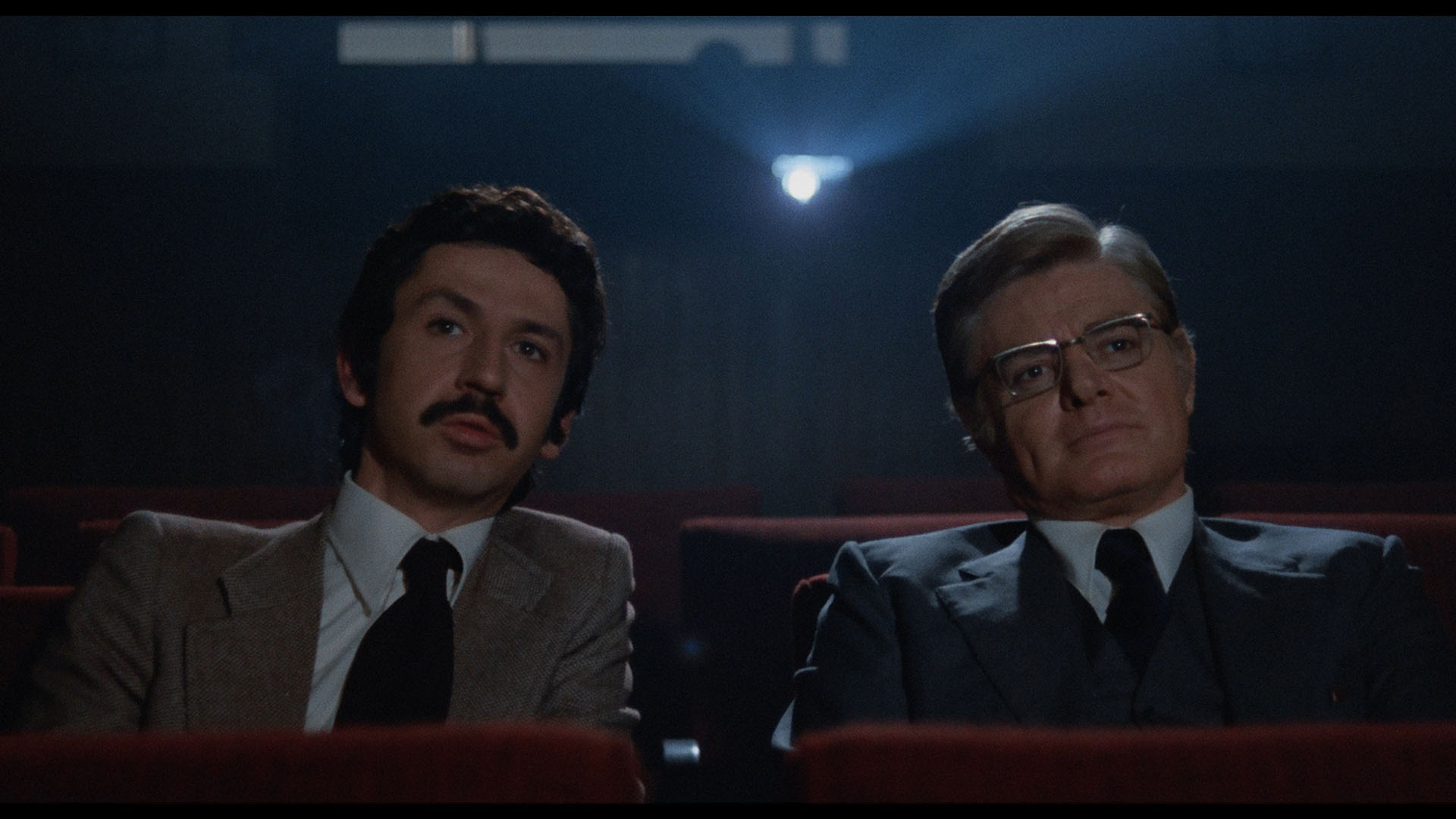 which more accurately means Why Kill a Judge). Here the latest opus by film director Giacomo Solaris (Nero) portrays a corrupt, bribe-happy judge who dies under the guns of mobsters. The real-life inspiration for the film, Judge Traini (Guglielmi), learns of the film and, at the insistence of his deeply-offeneded aide, has the filmmaker over for a dinner party. The meeting is far less polite than planned, however, with the two men squaring off over the film and various legal injunctions threatened. Unfortunately the judge turns up dead the next day, mirroring the finale of Giacomo's film. Though the Mafia seems to be the obvious culprit and the victim's wife (Fabian) fingers an incensed parking attendant, the director senses a much deeper and more sinister plot afoot and decides to investigate...
which more accurately means Why Kill a Judge). Here the latest opus by film director Giacomo Solaris (Nero) portrays a corrupt, bribe-happy judge who dies under the guns of mobsters. The real-life inspiration for the film, Judge Traini (Guglielmi), learns of the film and, at the insistence of his deeply-offeneded aide, has the filmmaker over for a dinner party. The meeting is far less polite than planned, however, with the two men squaring off over the film and various legal injunctions threatened. Unfortunately the judge turns up dead the next day, mirroring the finale of Giacomo's film. Though the Mafia seems to be the obvious culprit and the victim's wife (Fabian) fingers an incensed parking attendant, the director senses a much deeper and more sinister plot afoot and decides to investigate...
Rather than going for the superficial thrills that could be wrought from this story, Damiani aims for a more subdued, intellectual treatment with several whiplash plot twists that compensate for the absence of volatile action. Nero is top-notch and intense as usual, with the always magnetic Fabian making the most of her limited screen time as a woman of dubious motives. Though visually attractive, 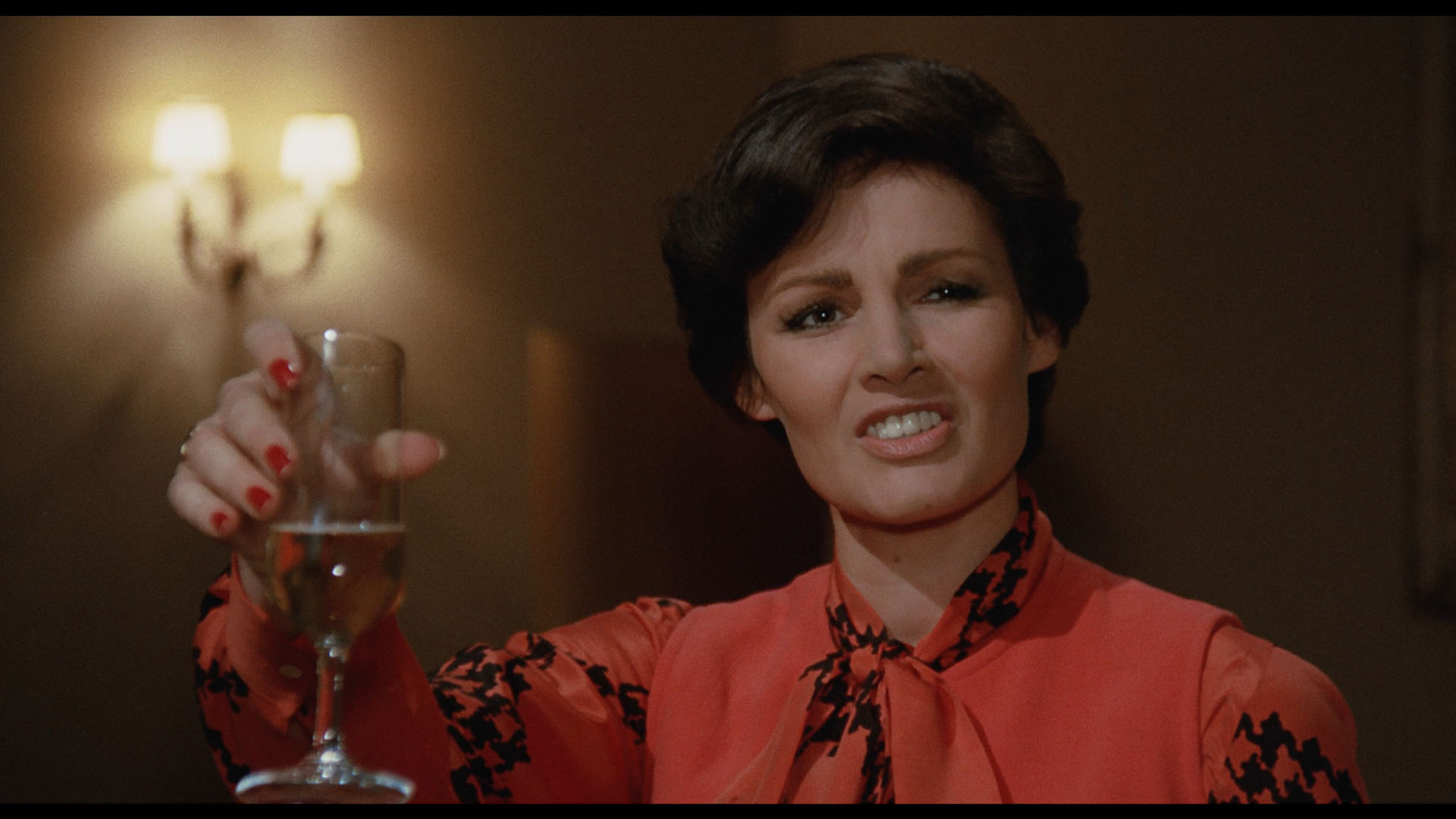 the film keeps its style low-key with moody but traditional color schemes, accented by a spare, unobtrusive score by Riz Ortolani.
In this particular case (as with many Italian thrillers circa 1975), the leads spoke their lines for this film in English without recorded sound, with dialogue looped later. In this respect it's a toss up which one to watch, and both were included on the initial U.S. DVD release from Blue Underground (which presented the longest version of the film available on home video to that time). Nero's
the film keeps its style low-key with moody but traditional color schemes, accented by a spare, unobtrusive score by Riz Ortolani.
In this particular case (as with many Italian thrillers circa 1975), the leads spoke their lines for this film in English without recorded sound, with dialogue looped later. In this respect it's a toss up which one to watch, and both were included on the initial U.S. DVD release from Blue Underground (which presented the longest version of the film available on home video to that time). Nero's 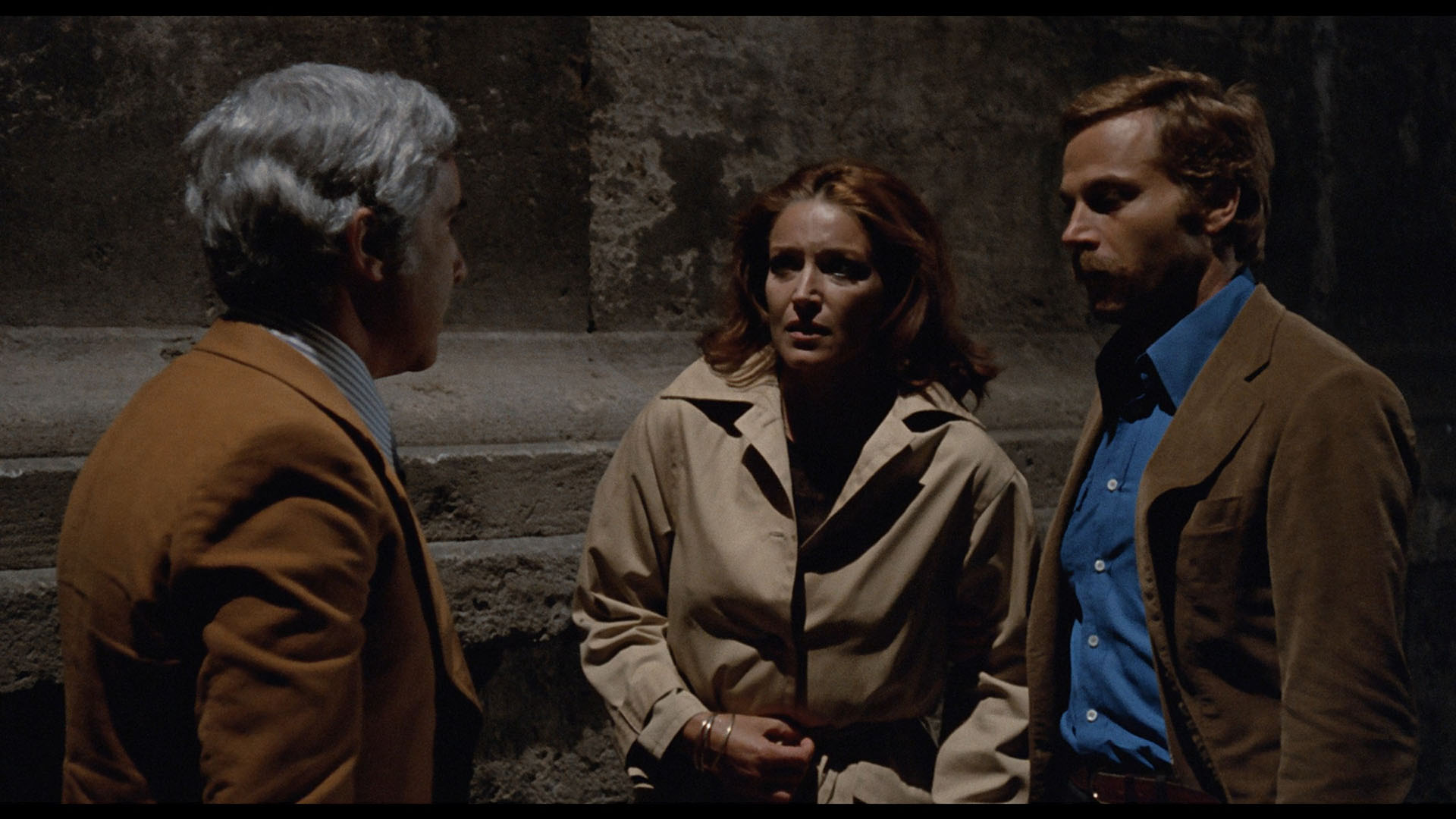 familiar accent adds considerably to his performance, which sounds a bit more brusque and flat in the Italian dub also included (with optional English subtitles). Image quality is solid throughout, with the original negative still in solid condition.
Extras include the English and Italian theatrical trailers (which make the film look a bit more action-oriented than it really is) and a 15-minute featurette, "The Damiani/Nero Connection," in which the star and director speak in separate but intercut chats about the making of the film, its Sicilian locales, and their other projects together.
familiar accent adds considerably to his performance, which sounds a bit more brusque and flat in the Italian dub also included (with optional English subtitles). Image quality is solid throughout, with the original negative still in solid condition.
Extras include the English and Italian theatrical trailers (which make the film look a bit more action-oriented than it really is) and a 15-minute featurette, "The Damiani/Nero Connection," in which the star and director speak in separate but intercut chats about the making of the film, its Sicilian locales, and their other projects together.
The Radiance disc obviously improves quite a bit in the a/v categories with the 2K restoration making for a solid presentation of another visually earthy production with a sometimes soft look. Both the Italian and English tracks are included, again with the Italian one sounding better preserved, and both have respective English subtitle options. A final new Nero interview (12m59s) covers that period in his career (originating in an assignment with Mario Cecchi Gori), the Terence Hill vehicle Damiani made in the interim so he could see the Grand Canyon, and the creation of what he regards as this "true auteur film" in their collaborations together. "Lessons in Violence" (21m38s) features filmmaker David Carins examining the film's visual language as an evolution of Damiani's past work and a way of dramatizing the central character arcs. A new interview with Directed by Damiano Damiani author Alberto Pezzotta (34m23s) is fascinating as he charts the political elements of the crime films including the scene that got Owl in ratings trouble, as well as the evolution of the depictions of the Mafia that evolved over the course of a decade. The English and Italian trailers are also included. The discs come packaged in a sturdy box containing a 115-page illustrated book featuring cast and crew credits, transfer notes, and a slew of essays: Andrew Nette's "Conspiracy of Silence: Leonardo Sciascia's The Day of the Owl," Piero Garofolo's "Motion to Reinstate The Case Is Closed: Forget It," Paul A.J. Lewis' "The Snail's Horns: Depictions of the Mafia in The Day of the Owl, The Case Is Closed: Forget It, and How To Kill a Judge;" a 1973 Damiani interview by Nicoletta Zalaffi; "Franco Nero: A Sense of Force" by this writer; Marco Natoli's "Cinema Politico: The Damiani Case," and a critical overview by Cullen Gallagher.
Reviewed on August 21, 2023.



 director Damiano Damiani is an often dizzying one including The Witch in Love,
director Damiano Damiani is an often dizzying one including The Witch in Love,  Confessions of a Police Captain, A Bullet for the General, and the strange Bette Davis vehicle, The Empty Canvas. On four occasions he directed popular leading man Franco Nero, and three of those were Mafia-themed crime dramas collected by Radiance Films in its 2023 boxed set, Cosa Nostra: Franco Nero in Three Mafia Tales by Damiano Damiani. Spanning eight years in the careers of its star and director, the trio of films makes for a compelling evolution of how the Mafia was handled on Italian screens ranging from gritty Sicilian drama to a large-scale canvas of political corruption.
Confessions of a Police Captain, A Bullet for the General, and the strange Bette Davis vehicle, The Empty Canvas. On four occasions he directed popular leading man Franco Nero, and three of those were Mafia-themed crime dramas collected by Radiance Films in its 2023 boxed set, Cosa Nostra: Franco Nero in Three Mafia Tales by Damiano Damiani. Spanning eight years in the careers of its star and director, the trio of films makes for a compelling evolution of how the Mafia was handled on Italian screens ranging from gritty Sicilian drama to a large-scale canvas of political corruption. The Italian cut has been around on VHS and DVD for quite a while (including an unauthorized disc from Wild East), and it premiered on Blu-ray in France (no English options) from Studiocanal as part of the "Make My Day" series. The Radiance edition features both the Italian and English versions with DTS-HD MA 2.0 mono tracks, with English-translated and
The Italian cut has been around on VHS and DVD for quite a while (including an unauthorized disc from Wild East), and it premiered on Blu-ray in France (no English options) from Studiocanal as part of the "Make My Day" series. The Radiance edition features both the Italian and English versions with DTS-HD MA 2.0 mono tracks, with English-translated and  SDH subtitles. The transfer sourced from a 2K restoration (the one released by Studiocanal by all appearances) looks excellent throughout. A new interview with Nero (17m21s) covers his working relationship with "one of the most American directors working in Europe," including his proficiency in English (which led to him going to the U.S. to make Amityville II: The Possession) and his aesthetic obsessions that included his growing time spent painting. "Franco Nero, Ugo Pirro, Lucio Trentini" (26m34s) is a 2006 documentary with the star, screenwriter, and production manager recalling the film's shooting in '67 (just after Nero's turn in Camelot), the fame of the source novel, the short haircut needed for Nero's role, the geographic idea that set it apart from the book, and the awe they felt getting to work with Cobb. A 2017 Belgian TV interview with Cardinale (22m20s) features her riding around at night in "Hep Taxi!" dishing out stories about her life and career, including rebuffing Marlon Brando's advances. "Identity Crime-sis: An Italian Genre Finds Itself" (20m4s) features Euro-crime expert Mike Malloy explaining how the film came after the wave of neorealism-inspired films, essentially serving as part of a transition to the more baroque action films to come the following decade. Finally Howard S. Berger and David Nicholson-Fajardo's "Casting Cobb: A Tale of Two Continents" (32m36s) takes a deep dive into the transition from the blustery stage and screen actor in America to occasional strong roles in Italian crime sagas like this and The Great Kidnapping where he could provide expert shading to his elder thespian statesman roles. The Italian trailer is also included.
SDH subtitles. The transfer sourced from a 2K restoration (the one released by Studiocanal by all appearances) looks excellent throughout. A new interview with Nero (17m21s) covers his working relationship with "one of the most American directors working in Europe," including his proficiency in English (which led to him going to the U.S. to make Amityville II: The Possession) and his aesthetic obsessions that included his growing time spent painting. "Franco Nero, Ugo Pirro, Lucio Trentini" (26m34s) is a 2006 documentary with the star, screenwriter, and production manager recalling the film's shooting in '67 (just after Nero's turn in Camelot), the fame of the source novel, the short haircut needed for Nero's role, the geographic idea that set it apart from the book, and the awe they felt getting to work with Cobb. A 2017 Belgian TV interview with Cardinale (22m20s) features her riding around at night in "Hep Taxi!" dishing out stories about her life and career, including rebuffing Marlon Brando's advances. "Identity Crime-sis: An Italian Genre Finds Itself" (20m4s) features Euro-crime expert Mike Malloy explaining how the film came after the wave of neorealism-inspired films, essentially serving as part of a transition to the more baroque action films to come the following decade. Finally Howard S. Berger and David Nicholson-Fajardo's "Casting Cobb: A Tale of Two Continents" (32m36s) takes a deep dive into the transition from the blustery stage and screen actor in America to occasional strong roles in Italian crime sagas like this and The Great Kidnapping where he could provide expert shading to his elder thespian statesman roles. The Italian trailer is also included.  Finally our third Mafia study with Damiani and Nero is How To Kill a Judge (Perché si uccide un magistrato,
Finally our third Mafia study with Damiani and Nero is How To Kill a Judge (Perché si uccide un magistrato,  which more accurately means Why Kill a Judge). Here the latest opus by film director Giacomo Solaris (Nero) portrays a corrupt, bribe-happy judge who dies under the guns of mobsters. The real-life inspiration for the film, Judge Traini (Guglielmi), learns of the film and, at the insistence of his deeply-offeneded aide, has the filmmaker over for a dinner party. The meeting is far less polite than planned, however, with the two men squaring off over the film and various legal injunctions threatened. Unfortunately the judge turns up dead the next day, mirroring the finale of Giacomo's film. Though the Mafia seems to be the obvious culprit and the victim's wife (Fabian) fingers an incensed parking attendant, the director senses a much deeper and more sinister plot afoot and decides to investigate...
which more accurately means Why Kill a Judge). Here the latest opus by film director Giacomo Solaris (Nero) portrays a corrupt, bribe-happy judge who dies under the guns of mobsters. The real-life inspiration for the film, Judge Traini (Guglielmi), learns of the film and, at the insistence of his deeply-offeneded aide, has the filmmaker over for a dinner party. The meeting is far less polite than planned, however, with the two men squaring off over the film and various legal injunctions threatened. Unfortunately the judge turns up dead the next day, mirroring the finale of Giacomo's film. Though the Mafia seems to be the obvious culprit and the victim's wife (Fabian) fingers an incensed parking attendant, the director senses a much deeper and more sinister plot afoot and decides to investigate... the film keeps its style low-key with moody but traditional color schemes, accented by a spare, unobtrusive score by Riz Ortolani.
In this particular case (as with many Italian thrillers circa 1975), the leads spoke their lines for this film in English without recorded sound, with dialogue looped later. In this respect it's a toss up which one to watch, and both were included on the initial U.S. DVD release from Blue Underground (which presented the longest version of the film available on home video to that time). Nero's
the film keeps its style low-key with moody but traditional color schemes, accented by a spare, unobtrusive score by Riz Ortolani.
In this particular case (as with many Italian thrillers circa 1975), the leads spoke their lines for this film in English without recorded sound, with dialogue looped later. In this respect it's a toss up which one to watch, and both were included on the initial U.S. DVD release from Blue Underground (which presented the longest version of the film available on home video to that time). Nero's  familiar accent adds considerably to his performance, which sounds a bit more brusque and flat in the Italian dub also included (with optional English subtitles). Image quality is solid throughout, with the original negative still in solid condition.
Extras include the English and Italian theatrical trailers (which make the film look a bit more action-oriented than it really is) and a 15-minute featurette, "The Damiani/Nero Connection," in which the star and director speak in separate but intercut chats about the making of the film, its Sicilian locales, and their other projects together.
familiar accent adds considerably to his performance, which sounds a bit more brusque and flat in the Italian dub also included (with optional English subtitles). Image quality is solid throughout, with the original negative still in solid condition.
Extras include the English and Italian theatrical trailers (which make the film look a bit more action-oriented than it really is) and a 15-minute featurette, "The Damiani/Nero Connection," in which the star and director speak in separate but intercut chats about the making of the film, its Sicilian locales, and their other projects together.![]()